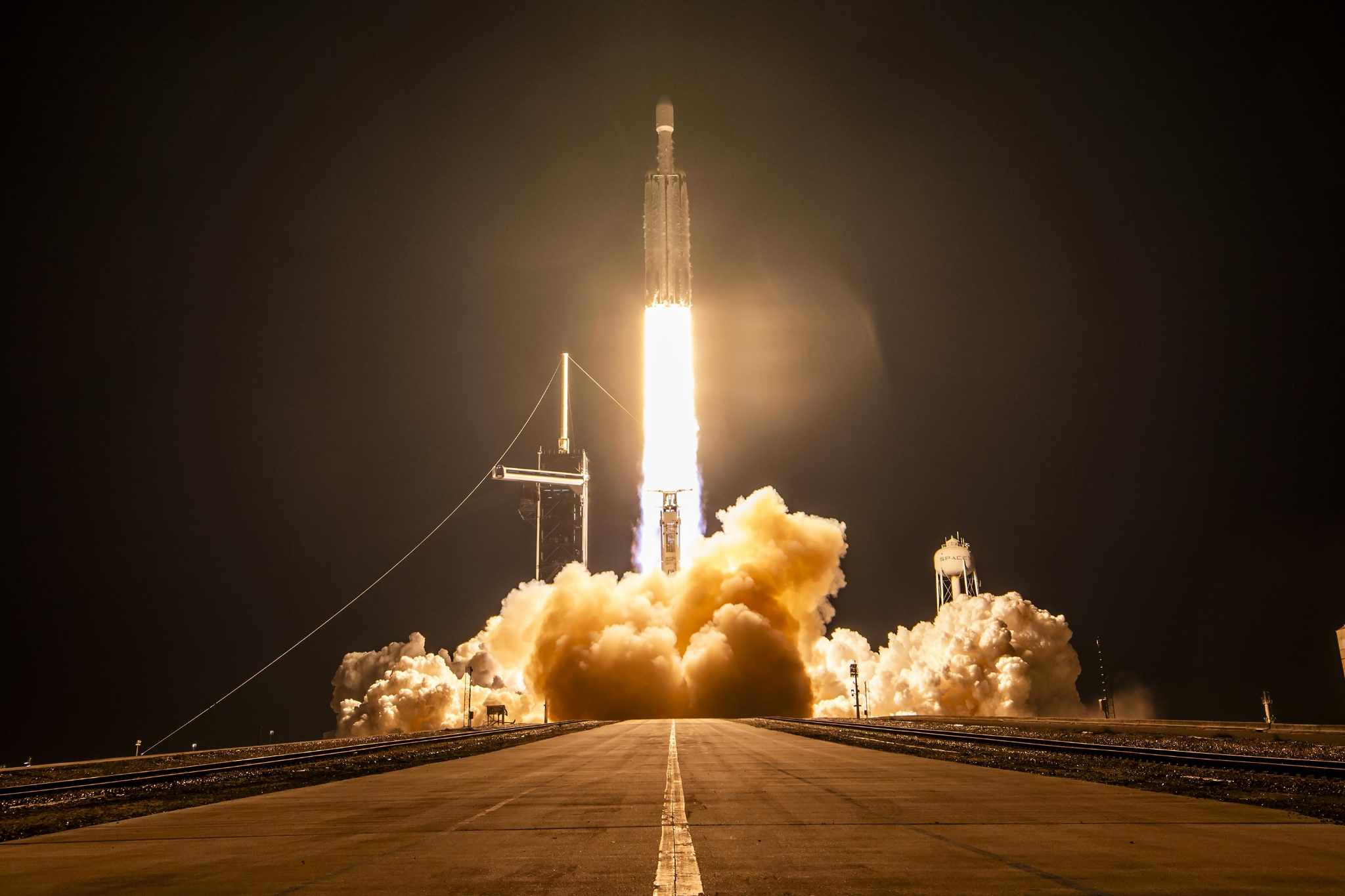
After a year which has seen turnaround and cadence records set, broken, reset and rebroken again, SpaceX last night pushed into 2023’s closing days with a new personal best for time elapsed between pairs of Falcon missions. At 8:07 p.m. EST Thursday, a triple-barreled Falcon Heavy—laden with the highly secretive USSF-52 payload for the U.S. Space Force—roared aloft from historic Pad 39A at Florida’s Kennedy Space Center (KSC), followed less than three hours later at 11:01 p.m. EST by a single-stick Falcon 9 out of Space Launch Complex (SLC)-40 at neighboring Cape Canaveral Space Force Station, carrying a stack of Starlink internet communications satellites to low-Earth orbit.
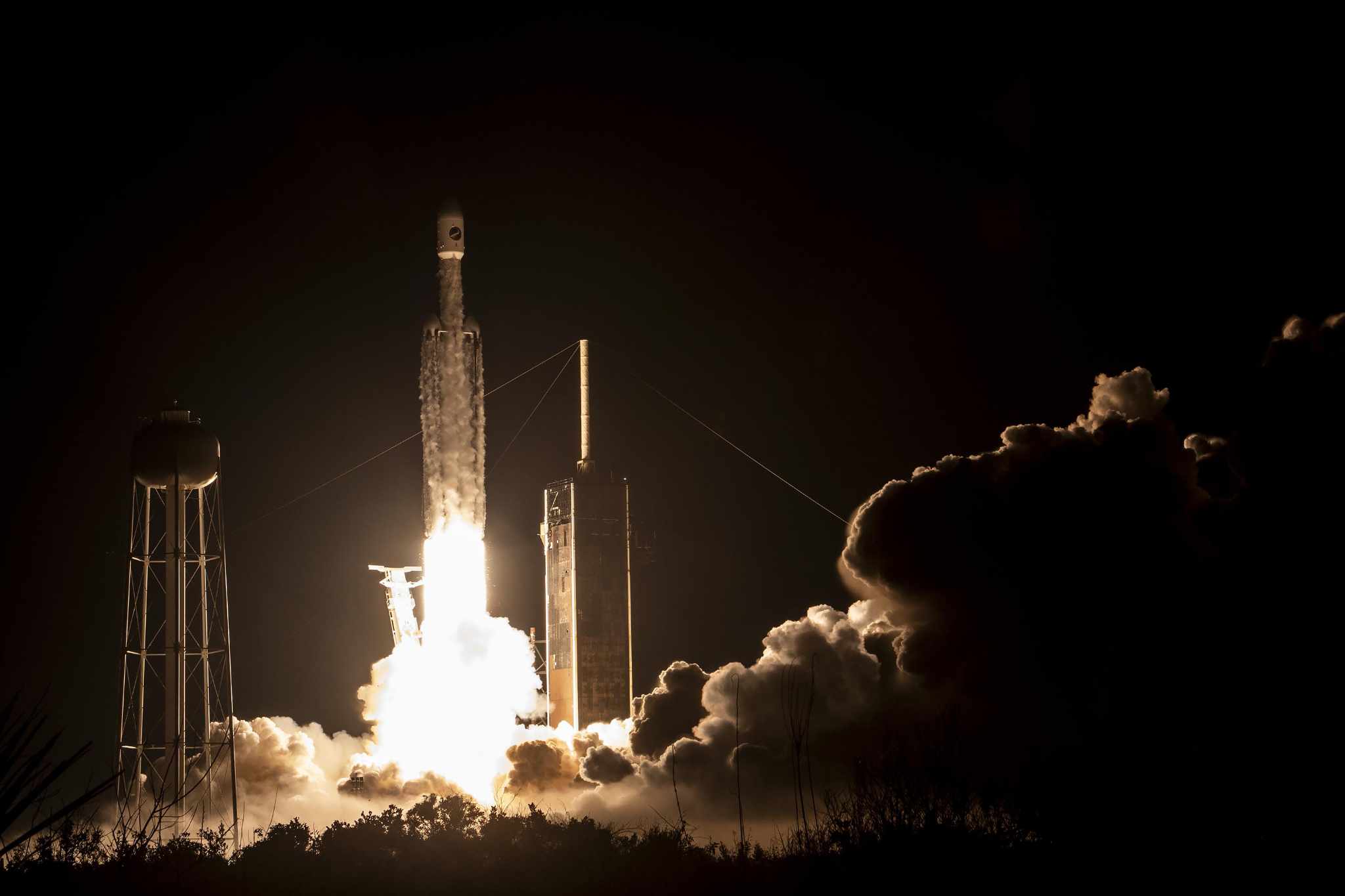
In thus flying two missions just two hours and 54 minutes apart, SpaceX sets a new empirical record for the shortest interval between pairs of Falcon launches, breaking the previous four hours and 12 minutes set by two flights last March. And it proved somewhat fitting that last night’s second mission—flown by the 12-times-used B1069 core—utilized the selfsame booster that also helped set the March record.
It is just another addition to a burgeoning tally of records set across the last dozen months. Since January, 91 Falcon 9 missions have been conducted by 15 boosters, including four brand-new cores, an increase of more than 30 percent from last year. And 2023 ends triumphantly with more flights by the Falcon Heavy—five—than in its entire previous history between February 2018 and November of last year.
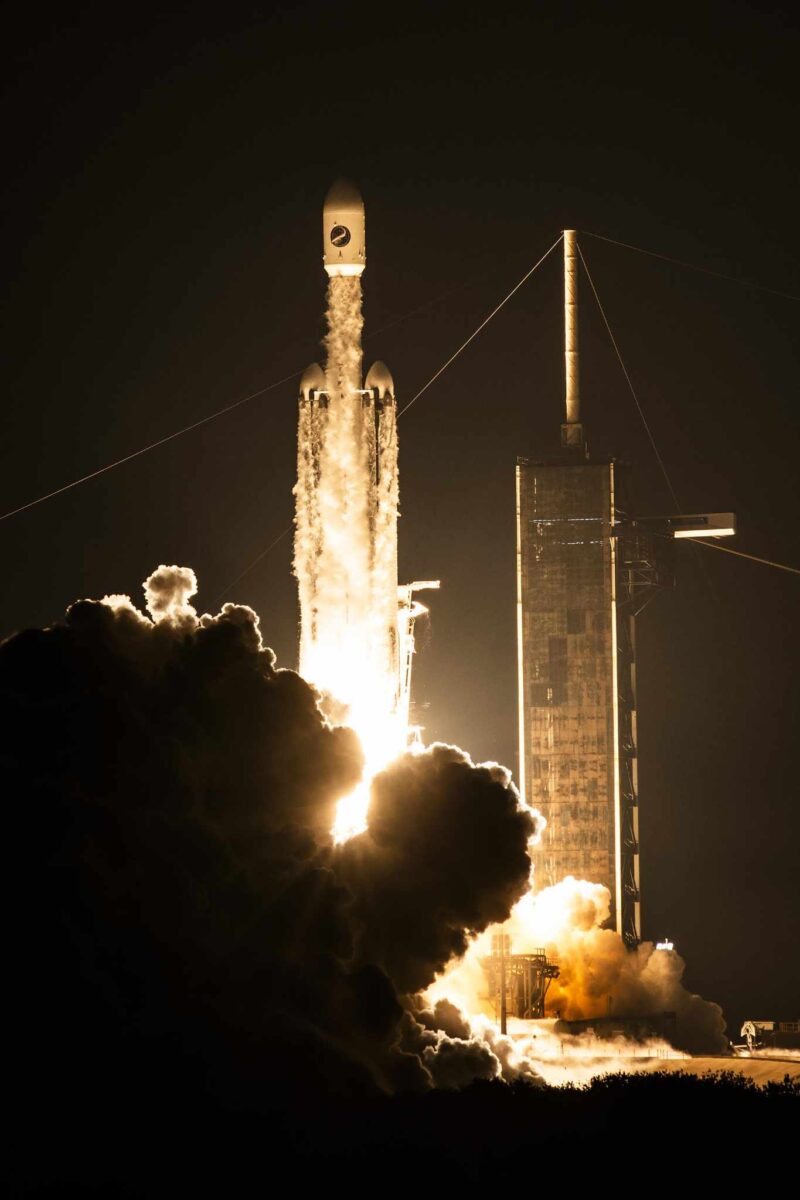
Weather conditions for last night’s pair of missions seemed highly favorable, with the 45th Weather Squadron at Patrick Space Force Base initially predicting an 80-percent likelihood of acceptable conditions for the USSF-52 launch at 8:07 p.m. EST, improving to 90 percent by an expansive middle-of-the-night raft of T-0 opportunities between 11:01 p.m. EST Thursday and 2:59 a.m. EST Friday for the Starlink launch.
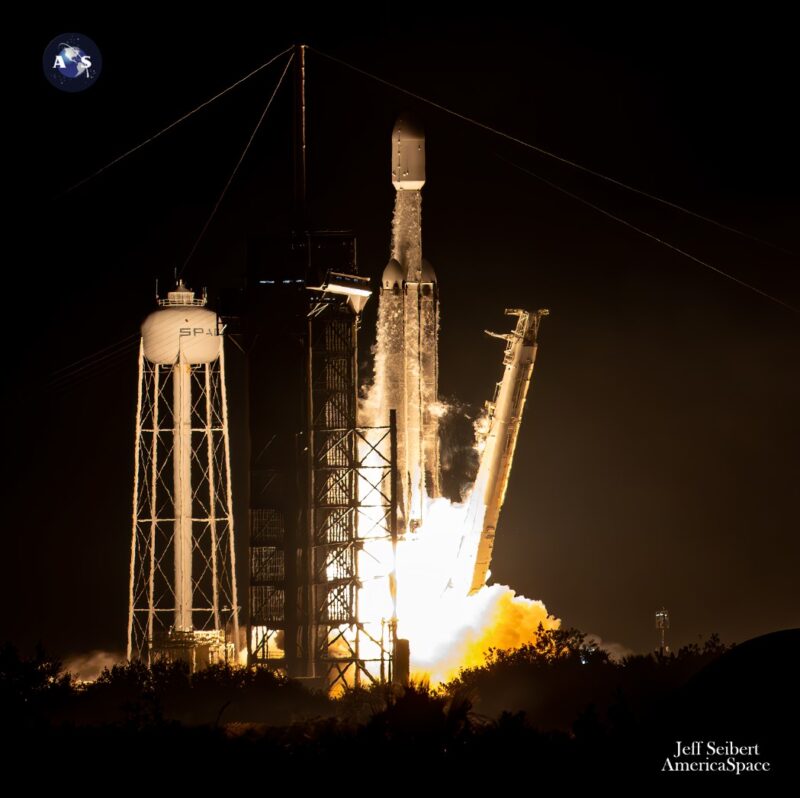
“An area of low pressure off the coast of the Carolinas will slowly move northeast through the day as a weak wave located in the Gulf of Mexico will move eastward across the central and southern portions of the state, bringing some spotty showers overnight and into Thursday morning,” noted the 45th. “Much of the upper-level moisture associated with the wave will move off the coast by midday, leaving only low-topped showers along the front to the west by the launch window.”
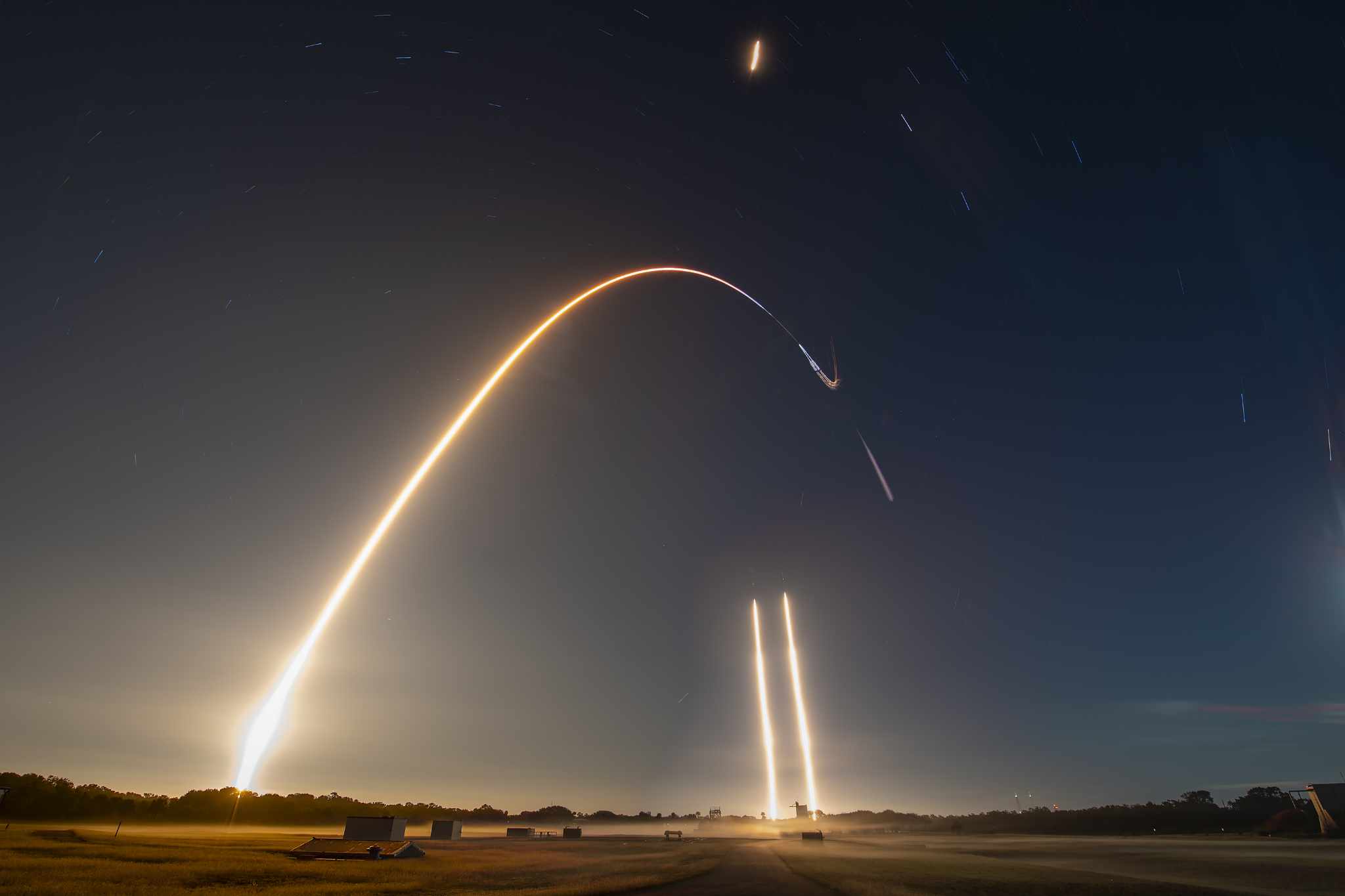
With concerns hinging principally upon a violation of the Cumulus Cloud Rule, the fifth Falcon Heavy of 2023 went airborne under 5.4 million pounds (3.4 kilograms) of thrust from its 27 Merlin 1D+ engines at 8:07 p.m. EST. Powering the behemoth uphill was the brand-new B1084 center core, set to be expended on this mission, and a pair of seasoned side-boosters, B1064 and B1065, both of which previously helped to loft four prior Heavies between November 2022 and last October.
The side-boosters were jettisoned some 2.5 minutes into ascent, whereupon both executed Entry and Landing burns to achieve synchronized touchdowns on solid ground at Landing Zones (LZ)-1 and 2 at Cape Canaveral. The center core, meanwhile, was discarded around four minutes after launch, allowing the second Merlin 1D+ Vacuum engine of the second stage to continue the burn to orbit.
At this stage, in light of the military secrecy surrounding USSF-52, SpaceX’s formal coverage ended. Announced last month, the primary payload is the seventh orbital voyage in a two-vehicle fleet by the Space Force’s uncrewed X-37B mini-shuttle.
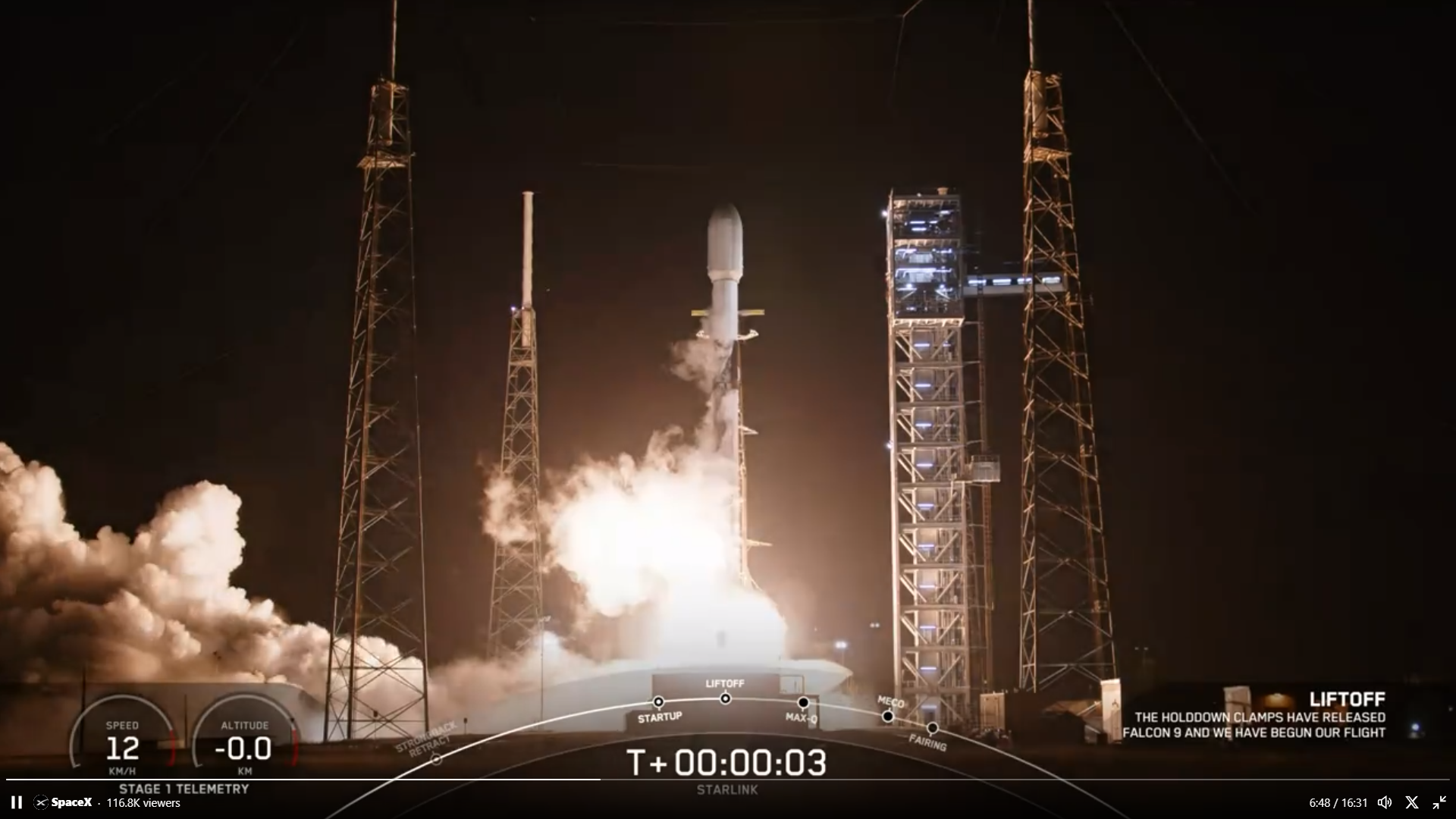
The spacecraft flying last night’s mission was making its fourth flight, having previously logged 1,966 cumulative days in space during three previous flights: it spend 15 months aloft between March 2011 and June 2012 and then logged a pair of two-year orbital stays between May 2015 and May 2017 and more recently between September 2017 and October 2019. It became the first X-37B to land on KSC’s former Shuttle Landing Facility (SLF) in May 2017 and was the first in the fleet to ride a Falcon 9 to orbit in September 2017.
And although the bulk of its payloads remain shrouded in secrecy, X-37B missions evaluated Aerojet Rocketdyne’s XR-5A Hall-effect thruster in furtherance of the Advanced Extremely High Frequency (AEHF) satellite constellation. They have also supported the Advanced Structurally Embedded Thermal Spreader-II (ASETS-II), which measured the performance of an oscillating heat pipe, and served as a testbed for a range of NASA experiments focused on the performance of materials in space.
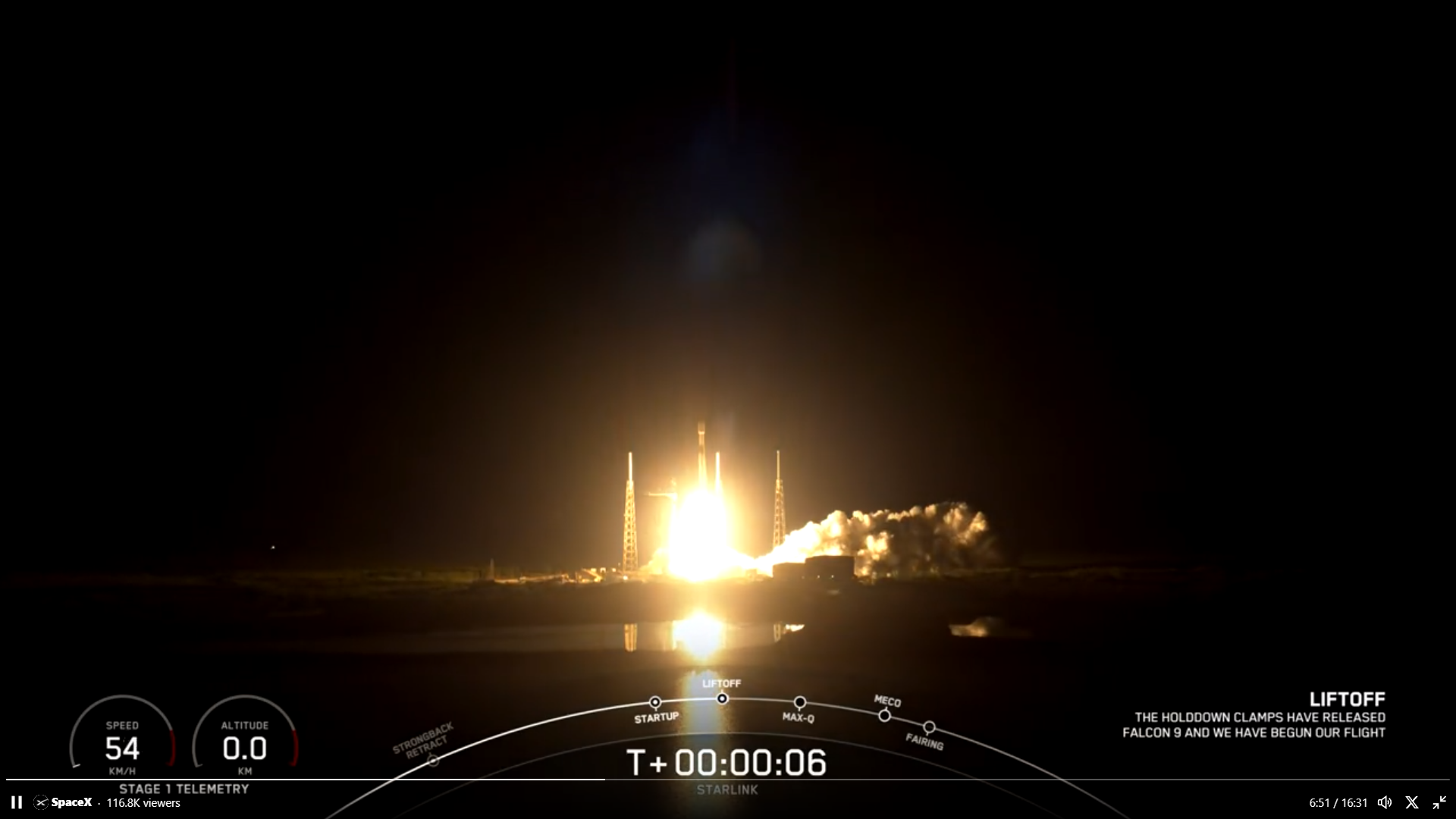
Launch services contracts worth $130 million for the mission, under its original, pre-Space Force guise as Air Force Space Command (AFSPC)-52, were awarded to SpaceX by the Air Force in June 2018. This was bilaterally modified by $19.2 million in August 2021, raising the total face-value contract to $149.2 million.
Meanwhile, the launch moved from an initial placeholder in fall 2020 to April 2022, a date which itself rapidly moved further to the right. Rescheduled to fly earlier in December, the snakebitten mission found itself pushed back to month’s end in response to an unfavorable weather picture for launch and recovery operations and ground-side technical issues pertaining to the USSF-52 payload.
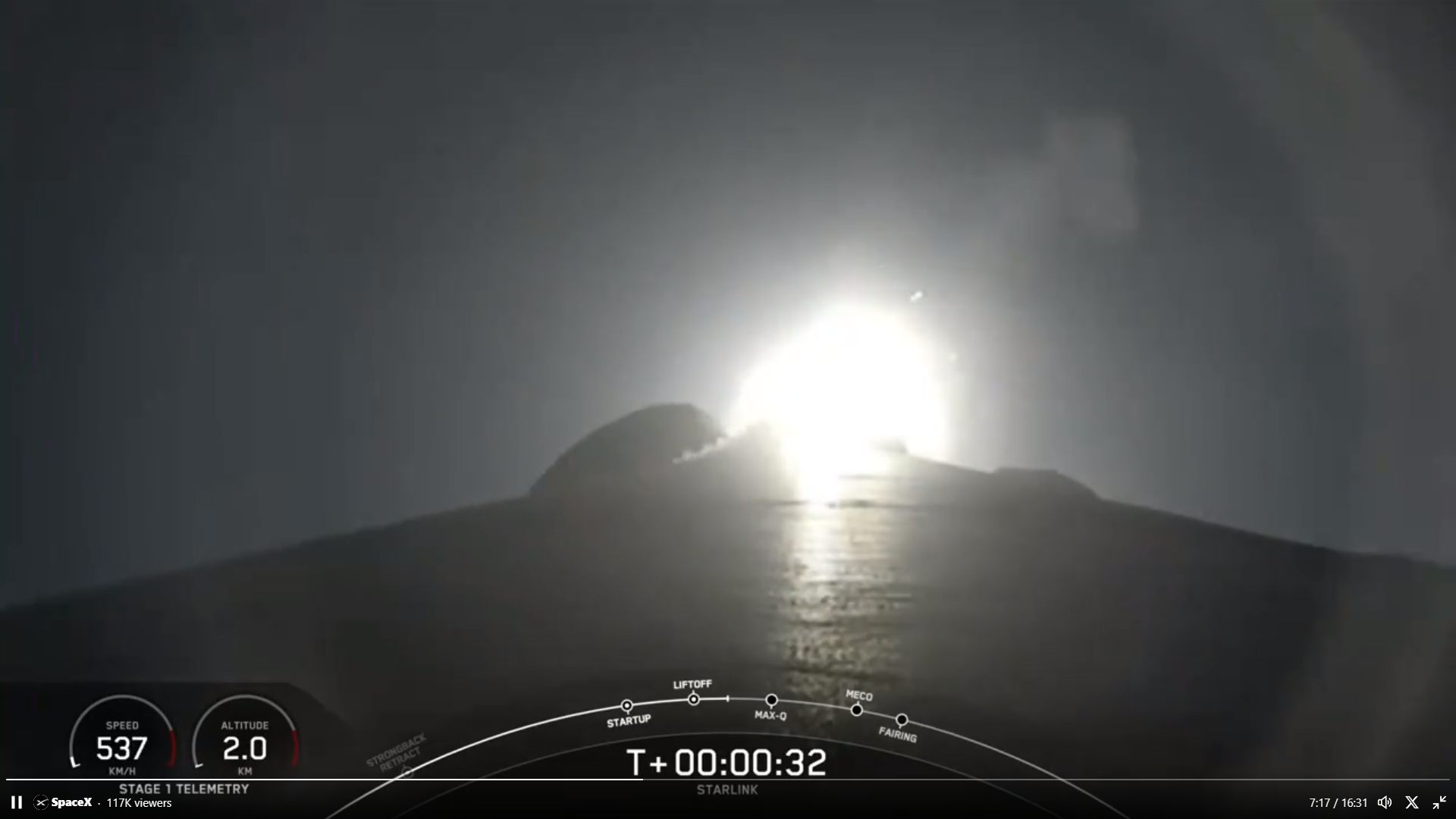
With the Falcon Heavy mission thus flown, the meteorological picture for last night’s second mission from neighboring SLC-40 looked decidedly more favorable, as conditions shifted towards 90-percent acceptability. Despite a risk of cloudiness and a chance of showers, cooler and drier conditions were expected to aid B1069’s chances of getting airborne on its 12th mission and its eighth in 2023 alone.
The veteran booster took flight at 11:01 p.m. EST, marking SpaceX’s ninth launch of December. Eight minutes later, B1069 pirouetted to an on-point touchdown on the expansive deck of the Autonomous Spaceport Drone Ship (ASDS), “A Shortfall of Gravitas”, situated about 390 miles (630 kilometers) offshore in the Atlantic Ocean.
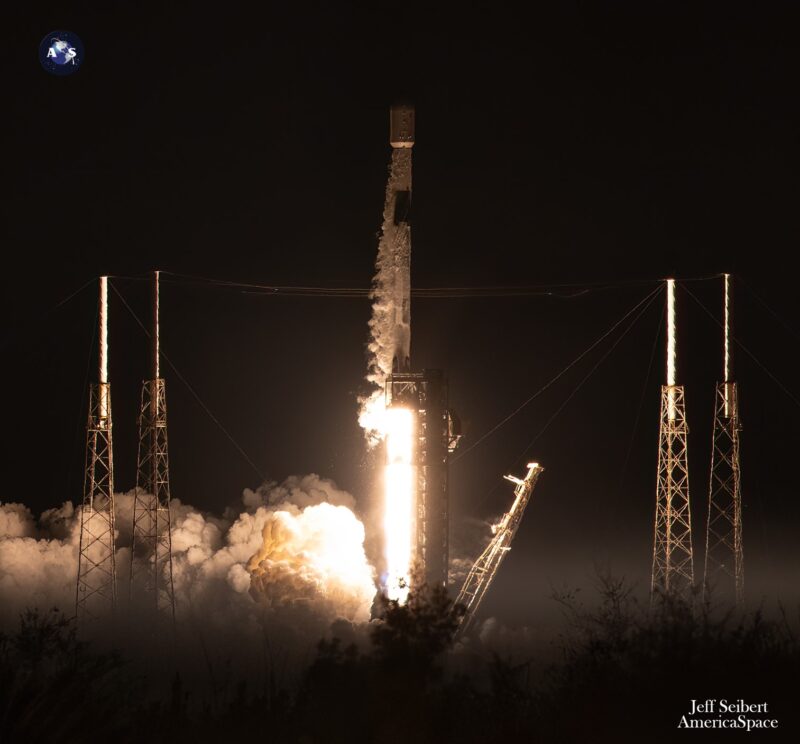
And 65 minutes into last night’s flight, the 23-strong Starlink stack was successfully deployed, marking the 63rd batch of these low-orbiting internet communications satellites to be launched so far in 2023. Another launch is targeted from Vandenberg Space Force Base, Calif., at 7:17 p.m. PST Saturday, bringing to more than 2,000 the total number of Starlinks placed into orbit since January.
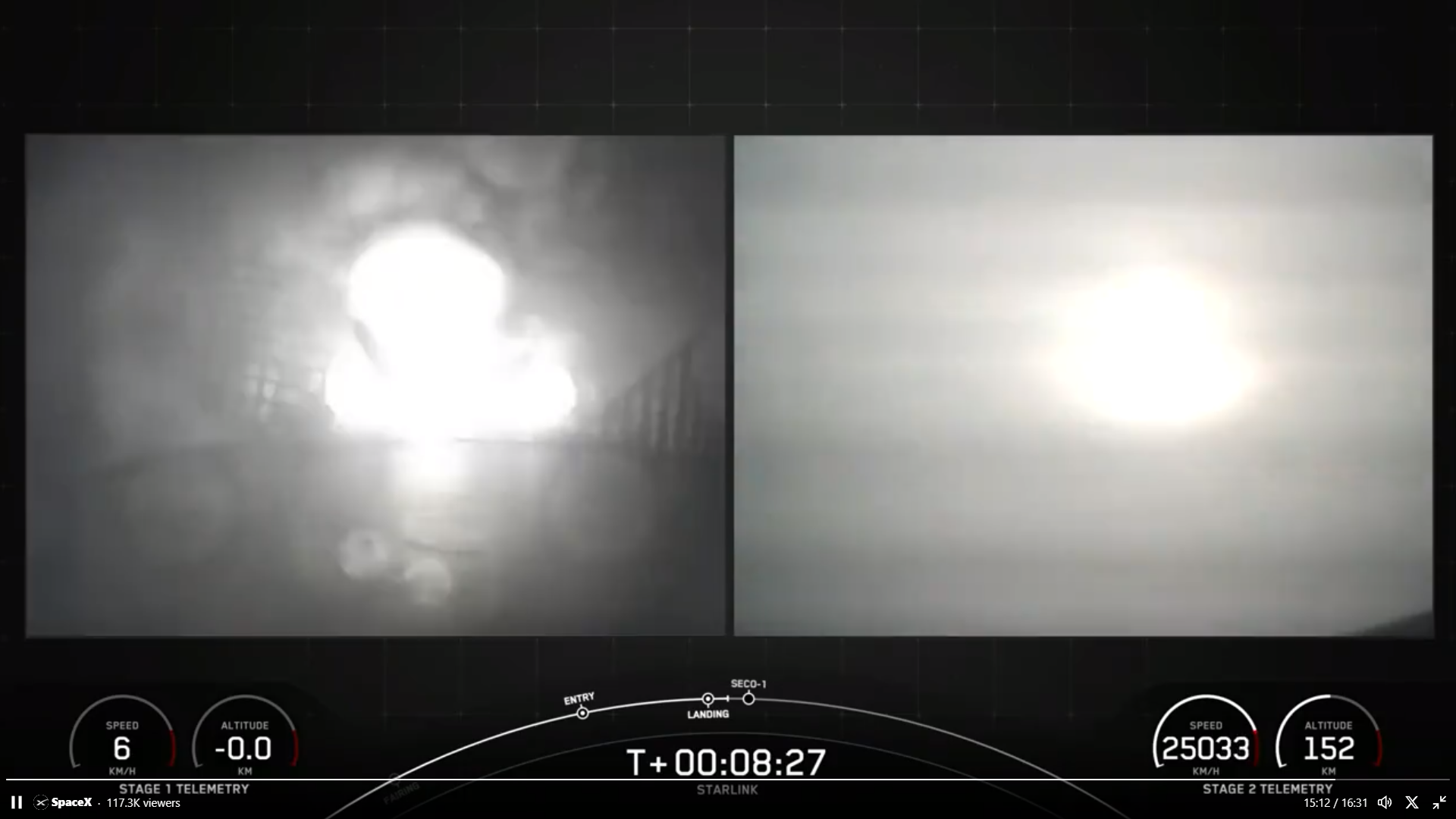
As a network, Starlink facilitates high-speed and low-latency internet provision to 70 sovereign nations and international markets in North and South America, Europe, Asia, Oceania and Africa. Landlocked Eswatini—formerly Swaziland in southern Africa—and Paraguay joined Starlink earlier this month.
The Starlink “V2 Mini” satellites, first flown in February, boast three to four times greater “usable” bandwidth than earlier Starlink iterations. “V2 Minis include key technologies—such as more powerful phased-array antennas and the use of E-Band for backhaul—which will allow Starlink to provide 4x more capacity per satellite than earlier iterations,” SpaceX explained. “Among other enhancements, V2 Minis are equipped with new argon Hall thrusters for on-orbit maneuvering.”
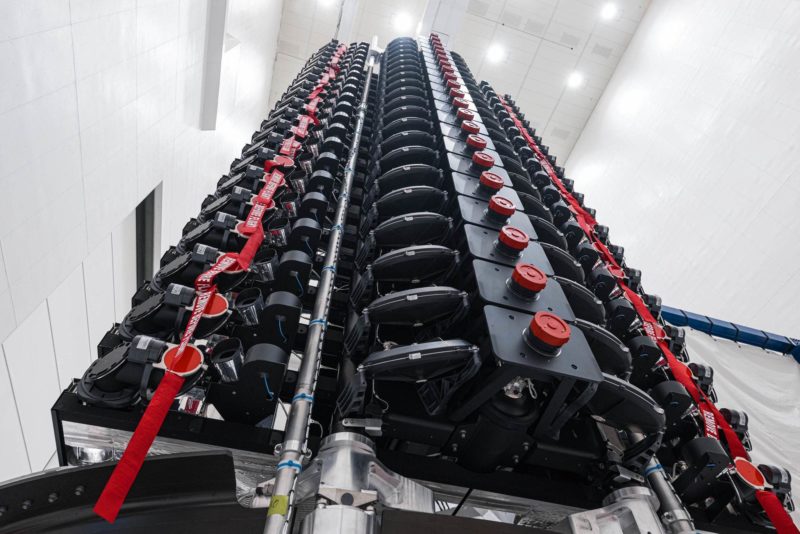
Florida-based intercity operator Brightline adopted Starlink on its trains earlier in 2023, the first passenger rail service in the world to do so. Additionally, El Salvador’s Ministry of Education has begun integrating Starlink capability into its schools to help close the digital divide between urban and remote rural communities and 50 Rwandan schools are now connected via Starlink’s high-speed internet service.
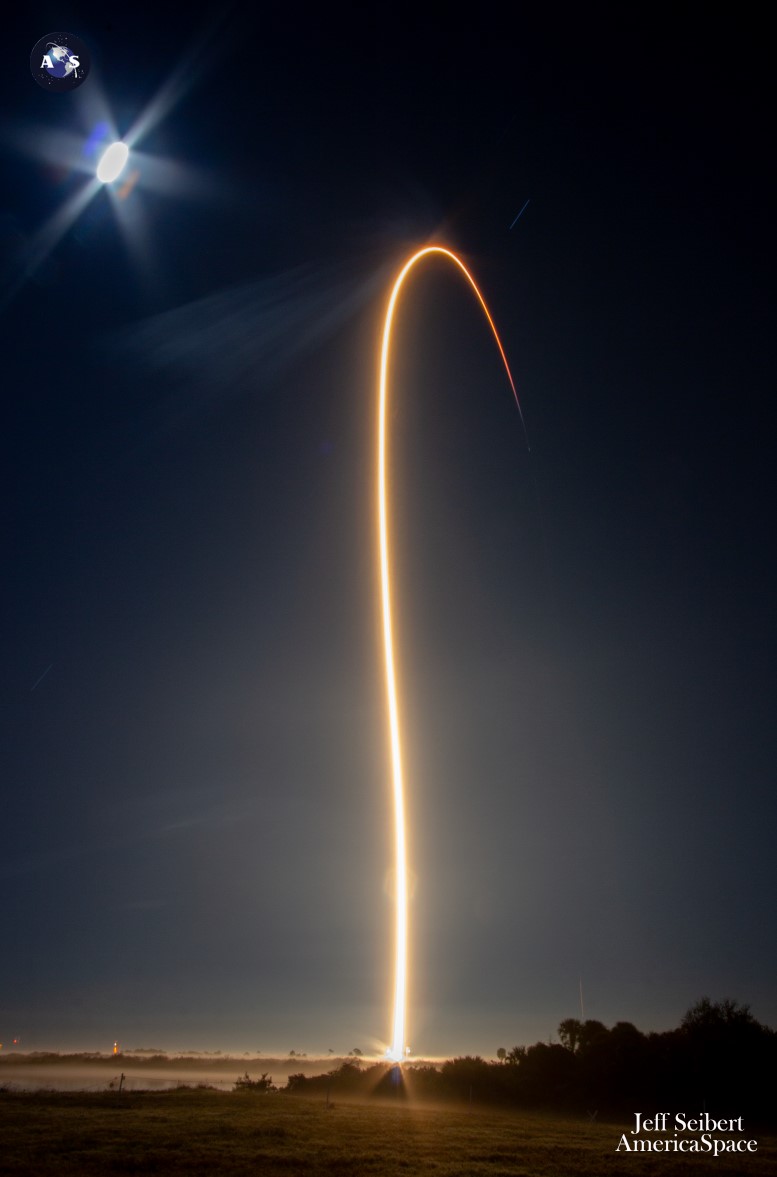




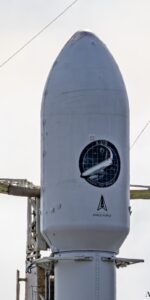

That Falcon Heavy jumped off the pad so quickly that I thought it had been launched with no payload—the spaceplane being put on the second rocket to fool China. 🙂